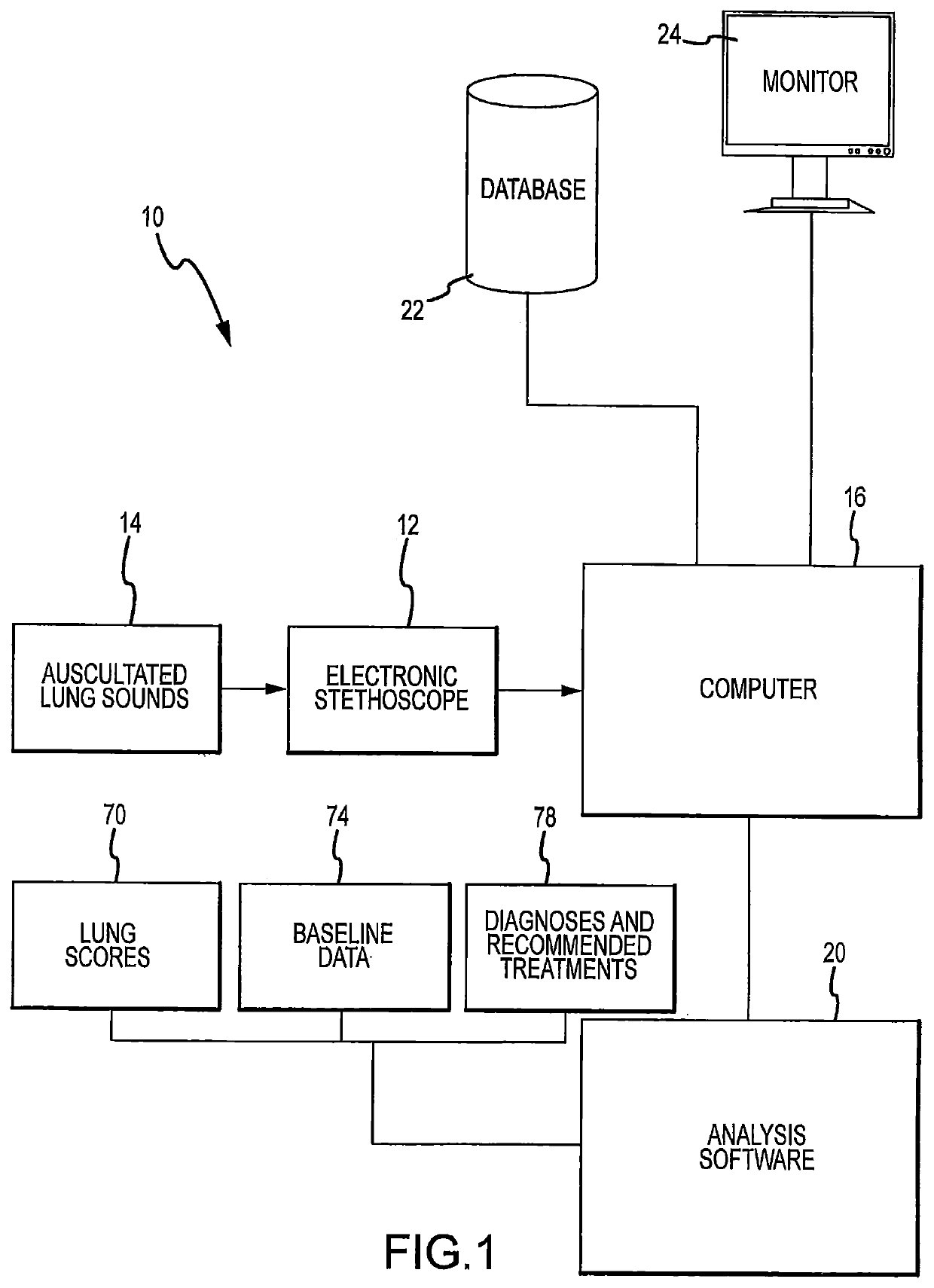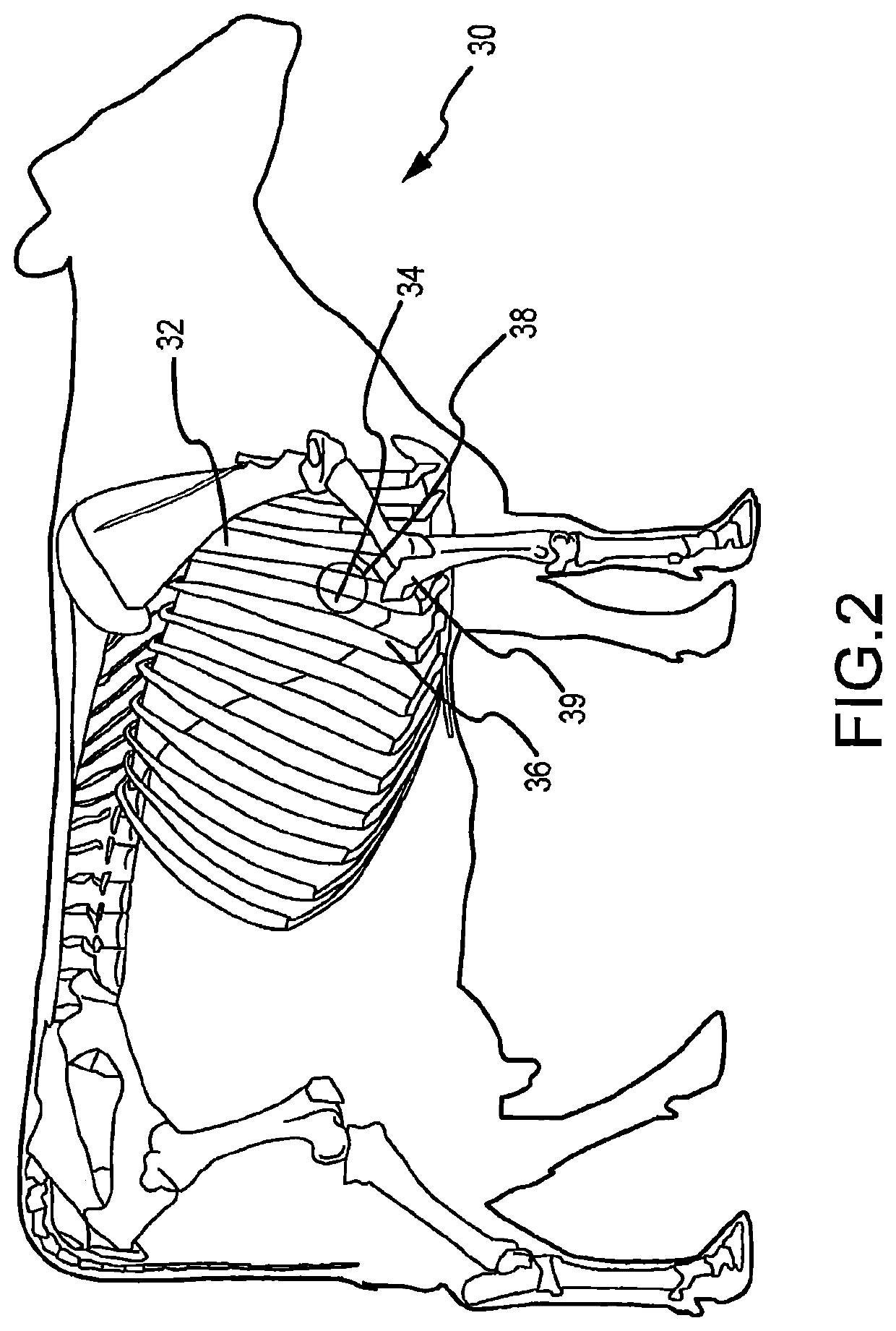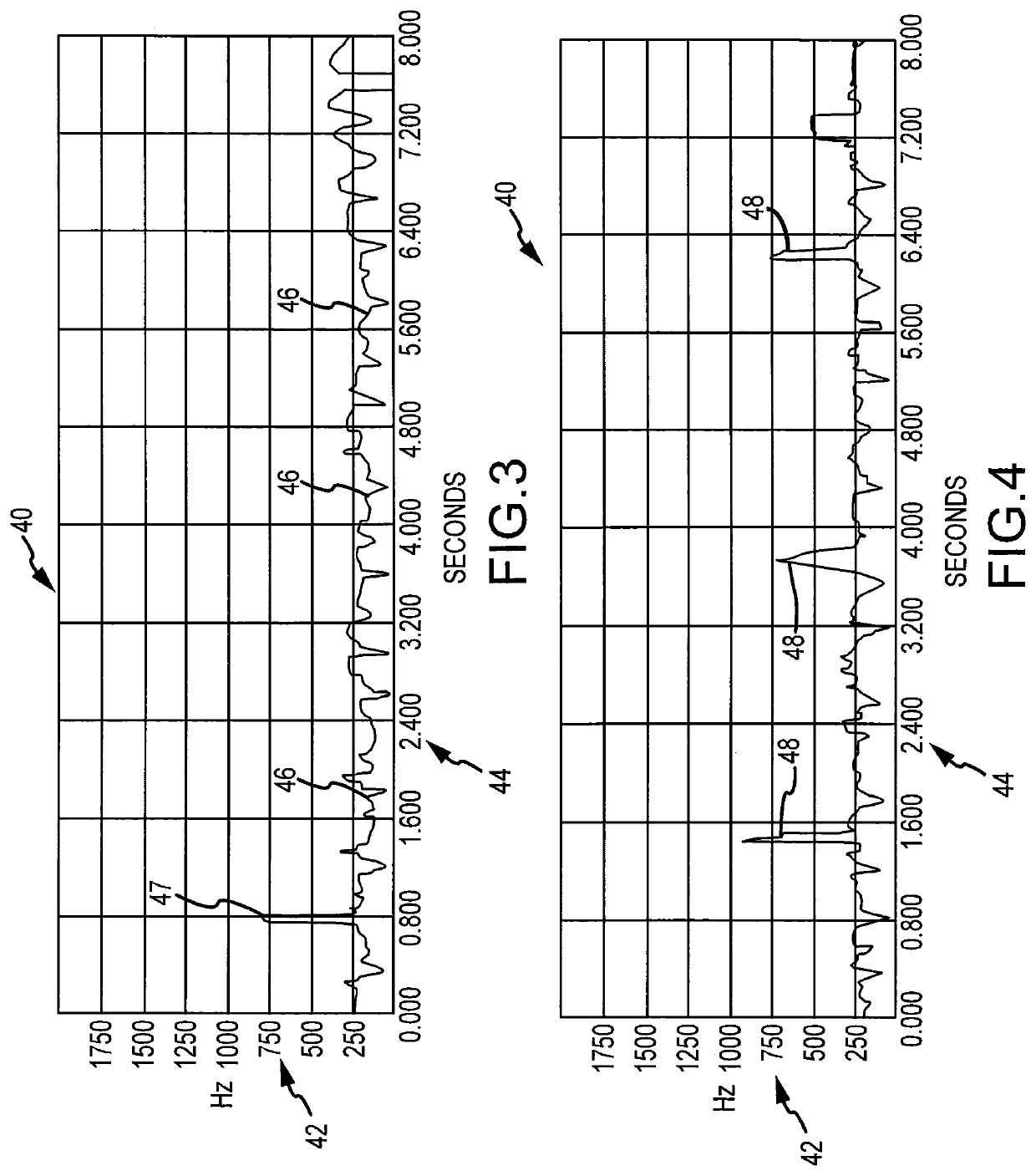System and method for diagnosis of bovine diseases using auscultation analysis
a technology of auscultation and analysis method, applied in the field of non-invasive diagnosis of diseases for animals, can solve the problems of difficult measurement of the true state of health of cattle, inability to gather data for auscultated bovine sounds, and infrequent use of auscultation for animals such as cattl
- Summary
- Abstract
- Description
- Claims
- Application Information
AI Technical Summary
Benefits of technology
Problems solved by technology
Method used
Image
Examples
Embodiment Construction
[0067]Referring to FIG. 1, the system 10 of the present invention is illustrated. An electronic stethoscope 12 is used to gather lung sounds 14 from the animal. The stethoscope 12 detects the sounds, and the sounds are then downloaded in digital form to a computing device 16. The computing device 16 can take a number of forms, such as a standalone personal computer, a portable computing device such as a personal digital assistant (PDA) The computing device 16 includes a conventional microprocessor for manipulation of computer-coded instructions in the form of the analysis software 20. One or more databases 22 accessible by the computing device stores the digital sounds. A user interface such as a monitor 24 allows the user to view the gathered data, to include a spectrogram that may be generated by the analysis software 20 indicative of various attributes of the recorded sound to include frequencies, amplitudes, and other attributes that are recorded over time.
[0068]The auscultated ...
PUM
 Login to View More
Login to View More Abstract
Description
Claims
Application Information
 Login to View More
Login to View More - R&D
- Intellectual Property
- Life Sciences
- Materials
- Tech Scout
- Unparalleled Data Quality
- Higher Quality Content
- 60% Fewer Hallucinations
Browse by: Latest US Patents, China's latest patents, Technical Efficacy Thesaurus, Application Domain, Technology Topic, Popular Technical Reports.
© 2025 PatSnap. All rights reserved.Legal|Privacy policy|Modern Slavery Act Transparency Statement|Sitemap|About US| Contact US: help@patsnap.com



